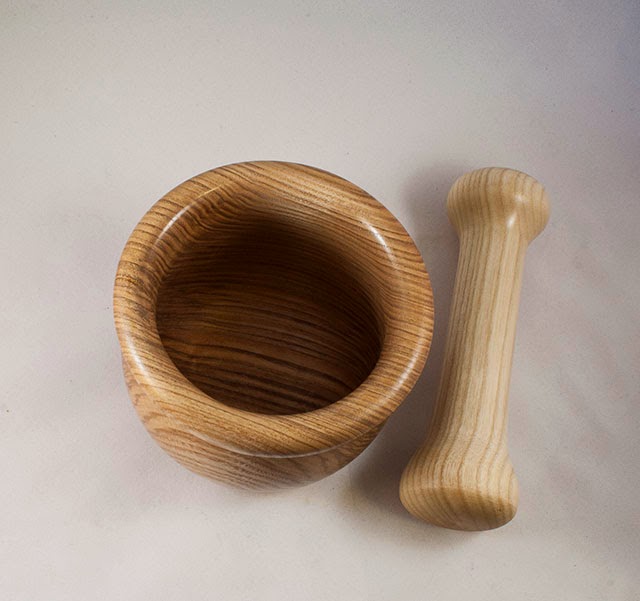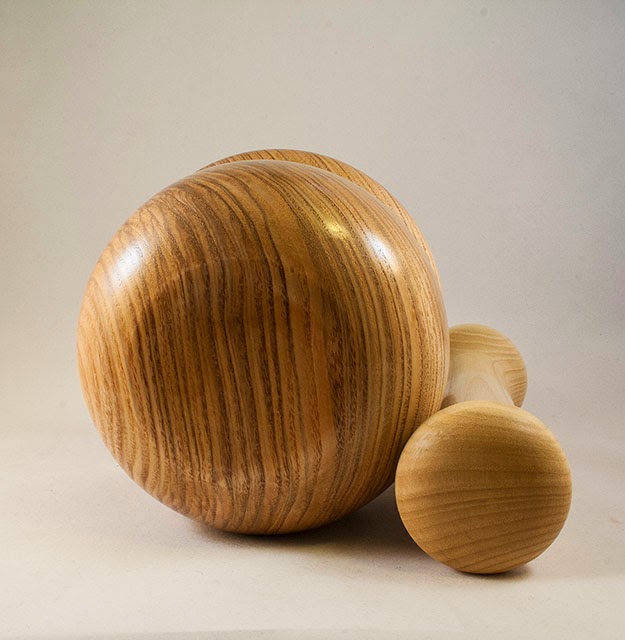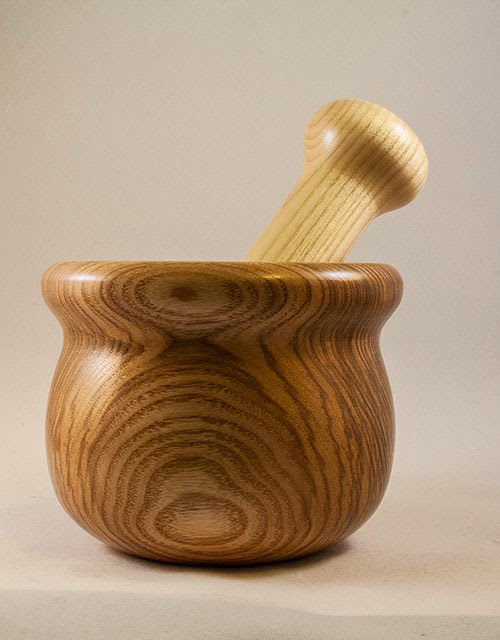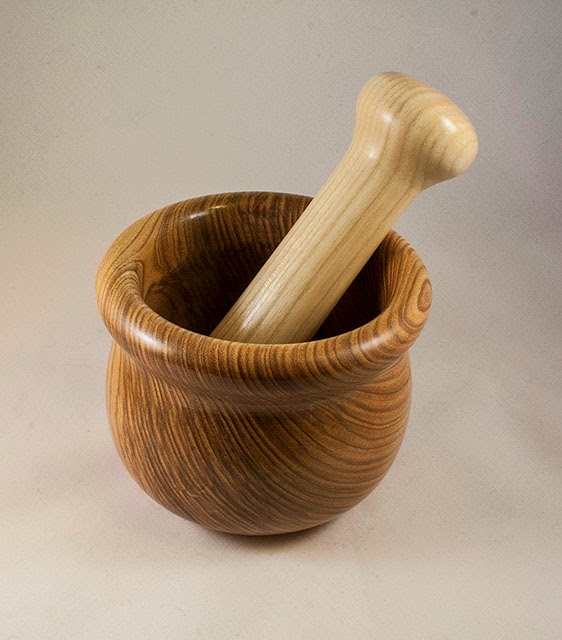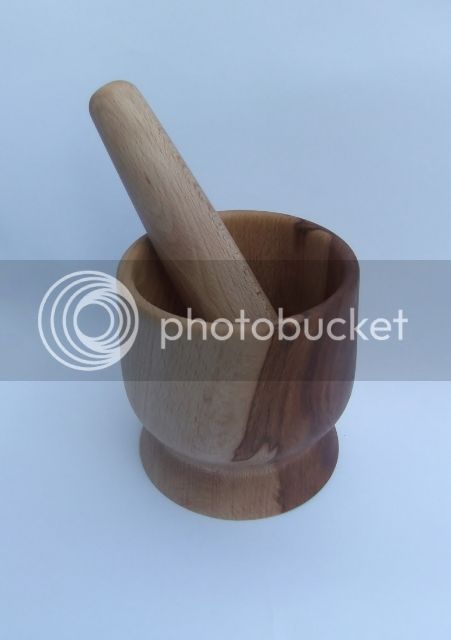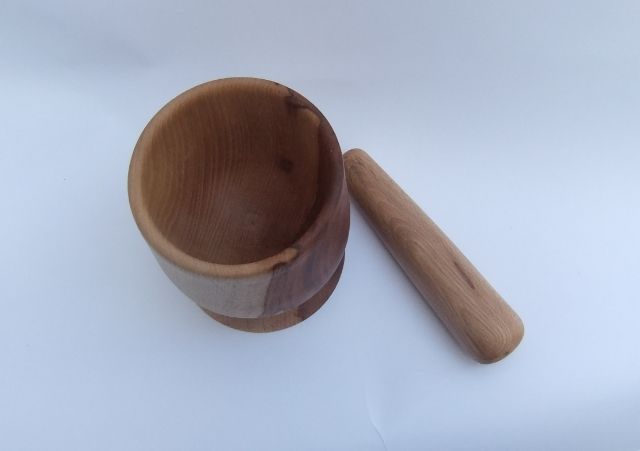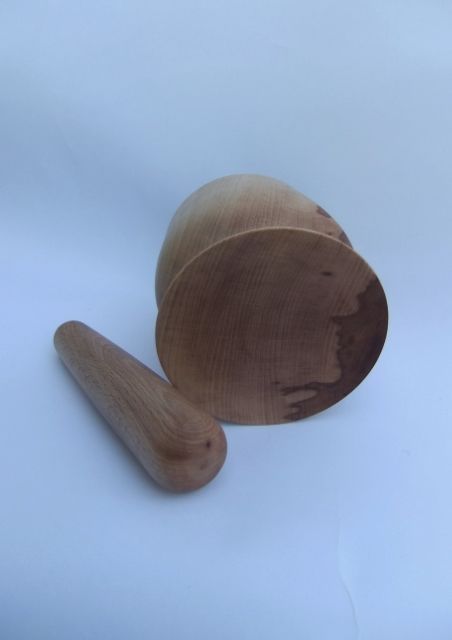henton49er
Established Member
Please post your entries for the December Woodturning Challenge on this thread.
The December Challenge is for a pestle and mortar. Richard Findley has kindly agreed to judge this month’s Challenge, and there will be a plaque for first place, kindly made for us by forum member Daven. Many thanks to both!! =D> =D> =D>
Challenge Requirements: Pestle and Mortar
This month’s rules are:-
1. The Challenge is open to anyone and everyone.
Entries must be new and made specifically for the Challenge.
Entries must be made of wood which must be turned on a lathe using woodturning tools.
2. The entry must be fit for purpose i.e for grinding and crushing hard spices such as peppercorns as well as gently bruising leafy herbs.
3. The wood used and its finish must be food safe.
4. Segmented turning and piercing are not allowed for this challenge
5. Carving, colouring, pyrography and texturing are allowed to the outside of the mortar (the bowl), and for the handle of the pestle only, and the judge must be able to see your turning skills! The inside of the mortar and the “business end” of the pestle must not be carved, coloured, pyrographed or textured.
Please post three images of your work together with details of the wood used, the tools and methods used to make it and any key dimensions.
Images needed:-
1 showing a general view of your entry with the pestle inside the mortar
1 view of the inside of the mortar with the pestle beside it (top view)
1 view of the bottom of the mortar and the business end of the pestle.
A fourth picture may be added (but is not compulsory) if needed to show any other interesting details of your entry.
Image size - please use image size 640 x 480 0.3mp, as in previous challenges
Please upload your pictures and description between 10pm on the 27th December and 10pm on the 29th December.
Please also send me a PM giving me your own opinions of 1st, 2nd and 3rd places amongst the entries (other than your own) between 10pm on 29th December and 10pm on 31st December (for me to compile the entrants’ scoring).
The December Challenge is for a pestle and mortar. Richard Findley has kindly agreed to judge this month’s Challenge, and there will be a plaque for first place, kindly made for us by forum member Daven. Many thanks to both!! =D> =D> =D>
Challenge Requirements: Pestle and Mortar
This month’s rules are:-
1. The Challenge is open to anyone and everyone.
Entries must be new and made specifically for the Challenge.
Entries must be made of wood which must be turned on a lathe using woodturning tools.
2. The entry must be fit for purpose i.e for grinding and crushing hard spices such as peppercorns as well as gently bruising leafy herbs.
3. The wood used and its finish must be food safe.
4. Segmented turning and piercing are not allowed for this challenge
5. Carving, colouring, pyrography and texturing are allowed to the outside of the mortar (the bowl), and for the handle of the pestle only, and the judge must be able to see your turning skills! The inside of the mortar and the “business end” of the pestle must not be carved, coloured, pyrographed or textured.
Please post three images of your work together with details of the wood used, the tools and methods used to make it and any key dimensions.
Images needed:-
1 showing a general view of your entry with the pestle inside the mortar
1 view of the inside of the mortar with the pestle beside it (top view)
1 view of the bottom of the mortar and the business end of the pestle.
A fourth picture may be added (but is not compulsory) if needed to show any other interesting details of your entry.
Image size - please use image size 640 x 480 0.3mp, as in previous challenges
Please upload your pictures and description between 10pm on the 27th December and 10pm on the 29th December.
Please also send me a PM giving me your own opinions of 1st, 2nd and 3rd places amongst the entries (other than your own) between 10pm on 29th December and 10pm on 31st December (for me to compile the entrants’ scoring).








